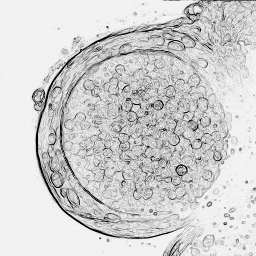Research
The social amoebae are a group of eukaryotes that live in the soil, feeding on bacteria. They are well known for their asexual developmental cycle, triggered by starvation, in which the amoebae group together and act cooperatively, forming a fruiting body that raises aloft a subset of cells that differentiate into spores, ready for dispersal.
The sexual cycle of these organisms is less celebrated, but is no less remarkable: haploid amoebae of different sexes fuse to form a zygote that attracts surrounding amoebae and ingests them, increasing in volume by up to 10,000-fold without dividing. As it exhausts the available food supply, the zygote matures into a walled structure called a macrocyst that can remain dormant for months. Ultimately it goes through meiosis, producing progeny that can escape from the cyst walls and resume normal growth.
We discovered the genetic means by which the different sexes are specified in the most famous social amoeba, Dictyostelium discoideum. The three mating types each possess a different version (or idiomorph, hence my twitter handle) of a single genetic locus that is sufficient to determine their sexual behaviour.
We recently found that some the enigmatic proteins encoded by this sex-determining locus are highly divergent homeodomain DNA-binding proteins, and that they have a conserved role in controlling the development of zygotes. The main strand of ongoing work is aimed at shedding light on the unusual features of meiosis - and inheritance patterns more generally - in social amoebae, including mechanisms that enable these cells to eliminate nuclear parasites. I also maintain interests in proteins regulating cell fusion and in the ancient, conserved mechanisms governing feeding and cell growth.



